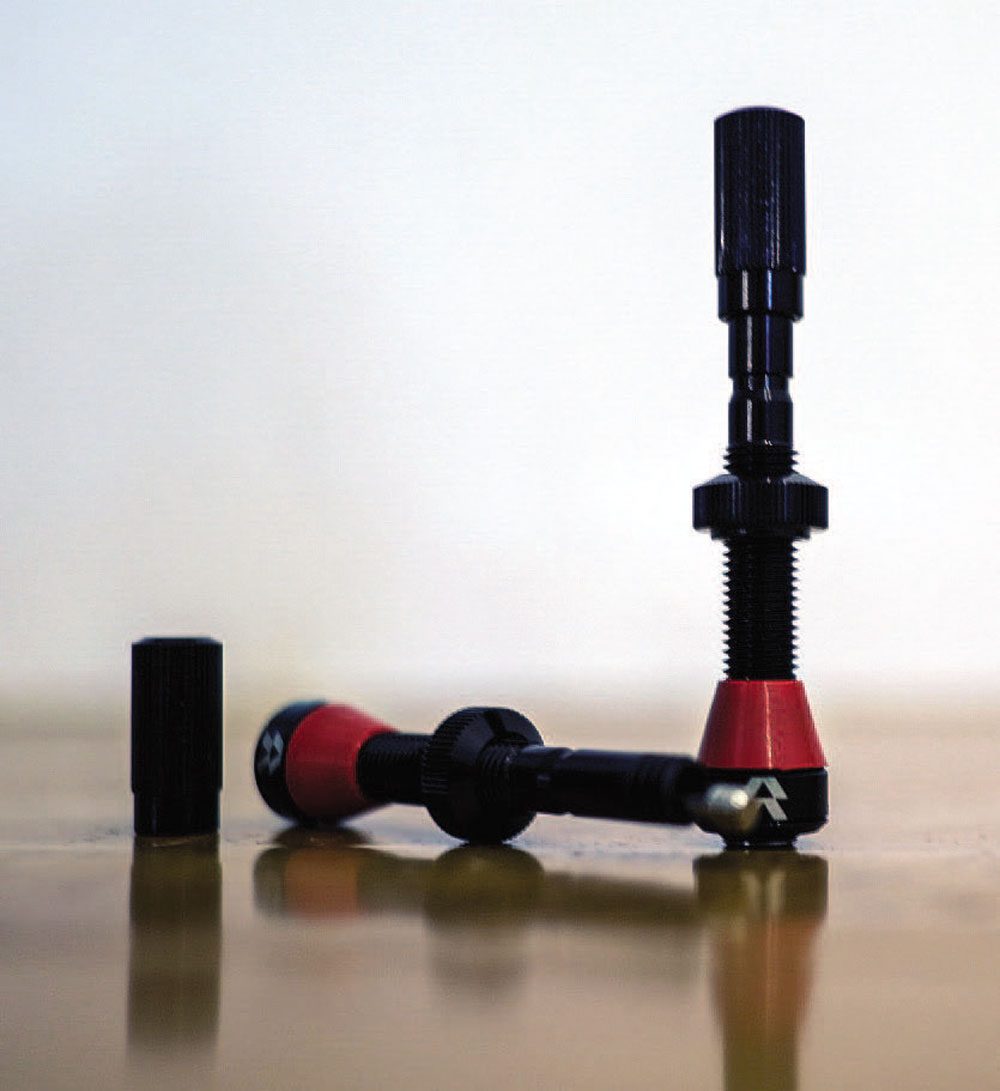Reviews: Ilabb Clothing
“Founded by two Motocross racers in 2007, ilabb soon found their clothing in demand.”
ilabb have been a player in New Zealand clothing since 2007. Recently, they’ve made a push into the mountain bike scene. Founded by two Motocross racers, Seadon Baker and Matt Saunders, ilabb started out making decals for motocross, however, they soon found their clothing in demand. The brand continued to evolve from there, tapping into unique subcultures such as drift, moto and now mountain biking. As such, I’ve had a selection of ilabb gear on test over the past season.
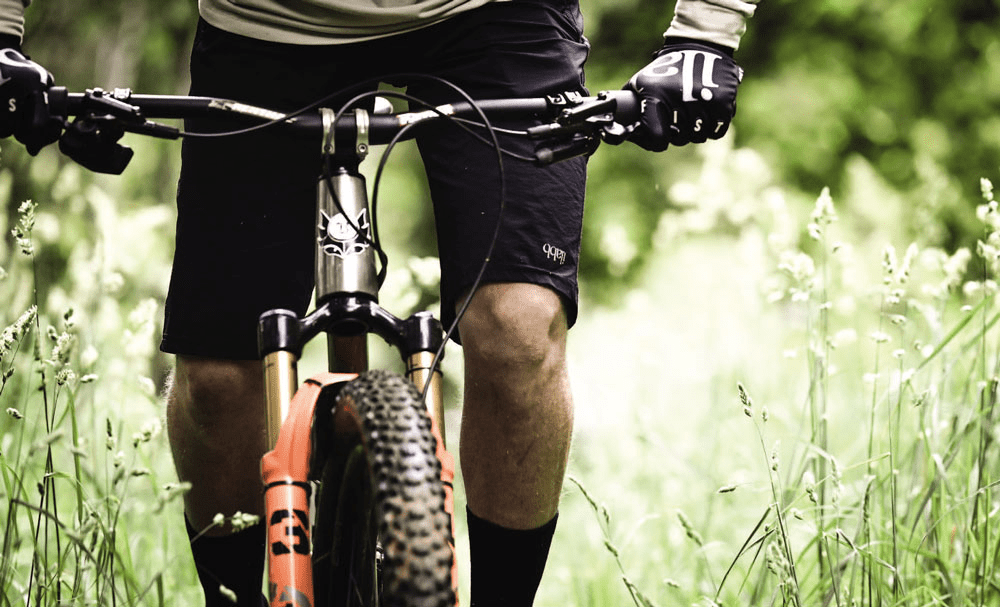
Terrain Shorts $139.99
ilabb’s Terrain shorts were the standout item for me. I really loved the fit and finish of these shorts – they’re made from ilabb’s conveniently named NYLABB material. This is a premium hard-wearing textile, made from high grade nylon with a high abrasion threshold; it’s got quite a unique tough-yet-soft feel about it. The Terrain shorts just nail the details. They feel supremely comfortable, thanks to the ample stretch around the hips, and the dome closure is securely held in place by the addition of a wide patch of Velcro up the fly. Internally, the inside of the hip panel features ilabb’s motto, ‘LIVE WITHOUT BARRIERS’, in highlighter pink; the lettering is made using a tacky, silicone, non-slip material – again, great for keeping them in place, especially if you’re wearing them over a Lycra chamois. Both main front pockets are zippered and there is a third smaller zippered pocket that’s great for a small multi-tool or car key fob. There are no pockets on the back because, well, who wants to sit on stuff while you’re riding?! I really liked that they are a plain black and don’t have massive logos everywhere - in fact, the only logo is the tiny reflective ‘ilabb’ on the front left leg. After plenty of muddy rides, washes and spins through the dryer (even though that’s not recommended on the care instructions!) they are still looking great and are my go-to short now.

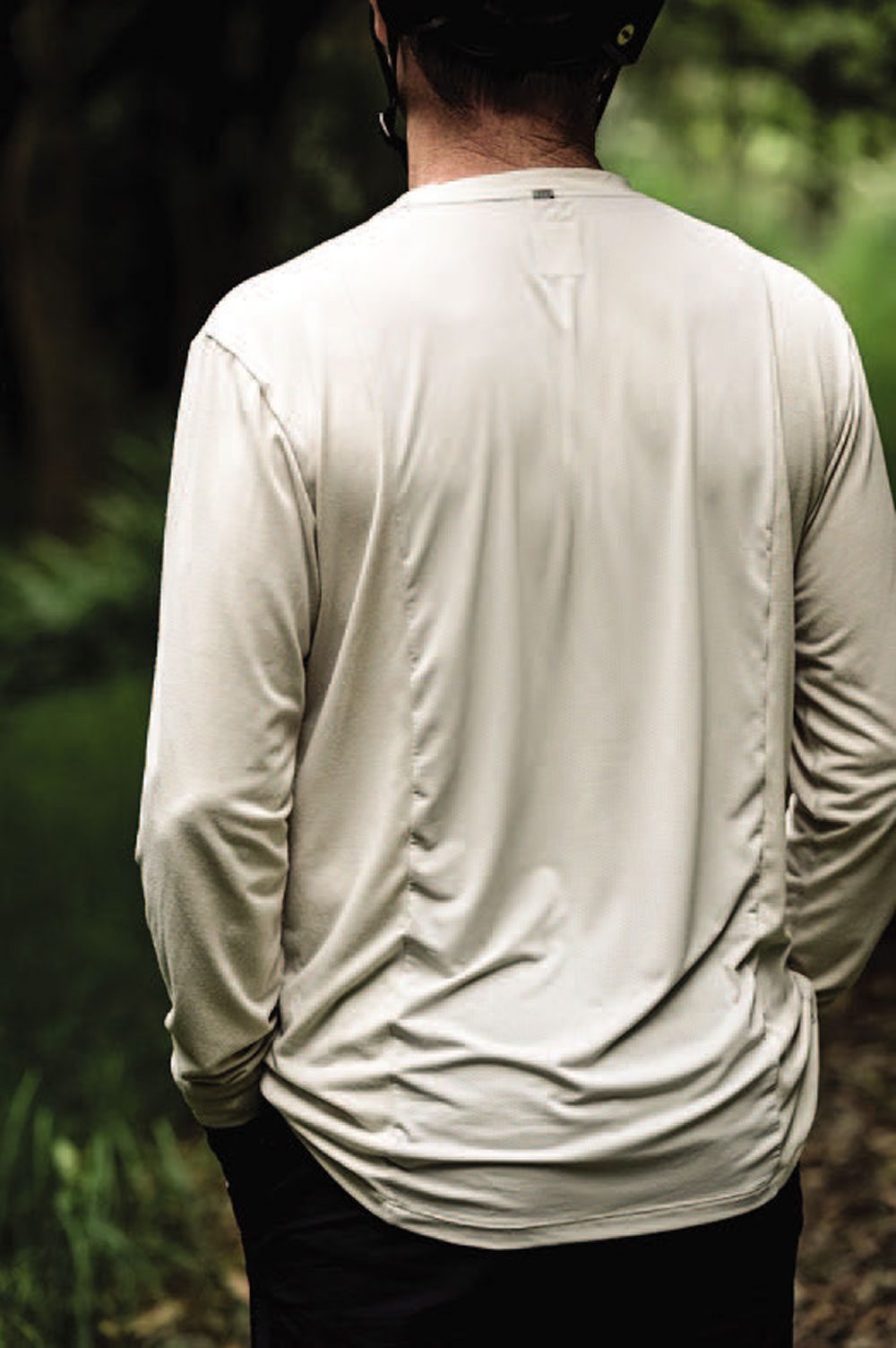 The front of the Lomond is a different weave and thickness to the back, being a lot warmer on the front, meaning you can cool down through the back.
The front of the Lomond is a different weave and thickness to the back, being a lot warmer on the front, meaning you can cool down through the back.
Lomond LS tee $89.99
When it comes to anything other than hot summer riding, most riding tops can be a bit hit and miss. Too hot, too cold – almost never just right. Enter the Lomond top. It’s like a long sleeve technical pyjama top, and it’s awesome. The Lomond is made from 79% Polyester, 14% Tencel, 7% Spandex - and is 100% snuggly.... like you wouldn’t believe (and yes, I have slept in it a number of times). In other words, it’s just right on those colder spring days. The Lomond is made using ilabb’s Dri-Ryde material and is lightweight, breathable and moisture-wicking. The front of the Lomond is a different weave and thickness to the back, being a lot warmer on the front, meaning you can cool down through the back. Despite not generally wearing long sleeve tops, due to overheating, the Lomond is really useful and versatile – and a great pick for cooler days on the bike. There is a short sleeve version available too, which would be great for summer. Again, I like the minimalist logo. The Lomond is available in black, or the dreamily named, ‘Moonbeam’.
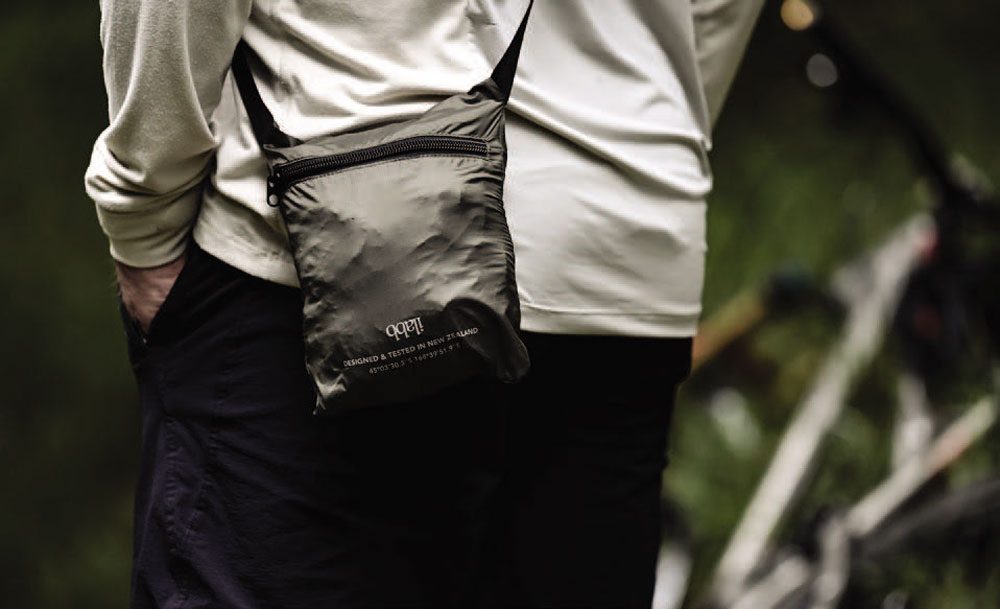
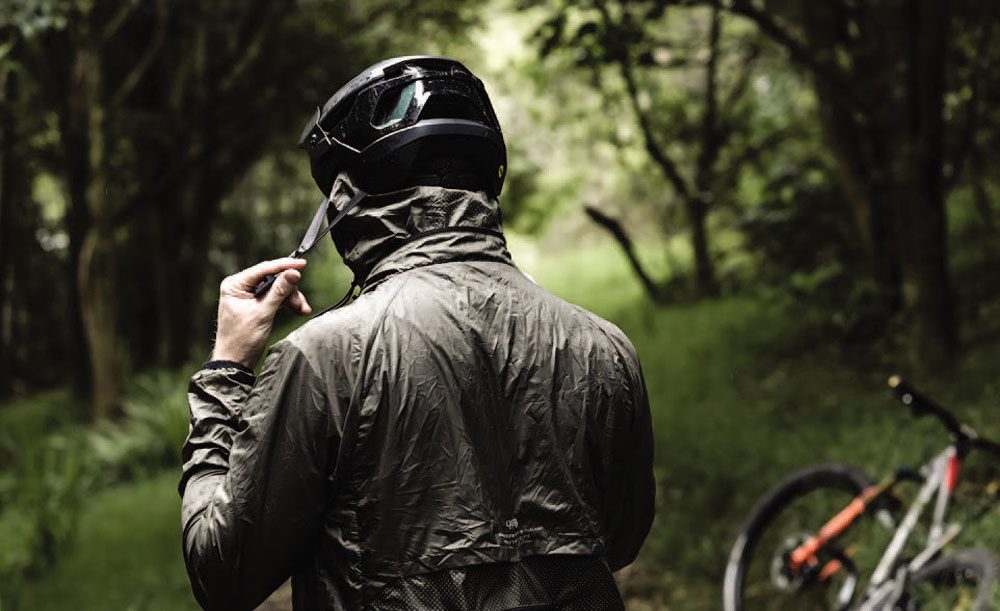
Marlborough Jacket $139.99
The surprise of the collection for me was the Marlborough Jacket. The Marlborough is a very lightweight nylon shell that has a few handy features for cyclists – the first of which is that it has a hood, but the material is so thin that it can actually sit comfortably under a helmet. Handy drawstrings pull the hood nicely around your face, and once it’s in place you can comfortably ride in the rain without water running down your neck. It’s enough to make you almost look forward to rainy days. I’ve had other jackets with hoods, but this is by far the most comfortable to wear underneath a helmet. Secondly, this aforementioned lightweight material means that it crushes down to about the size of a healthy filled roll – and into its own bag, that is sewn into it, nonetheless! The lightweight fabric means that this really is just for showers, more than Everest expeditions but, being so small, you can leave it in the bottom of your bag permanently and it will be there when you need it. It even has a handy shoulder strap if you just want to take it out for a stroll. Sadly, my wife keeps stealing it and putting it in her bag for when she is out. On the bike, it’s cut to sit well in the riding position; there are two zippered front pockets, a draw string around the waist, vents under the arms and on the back, and a subtle polka dot pattern on the front and back which is also reflective. It’s available in hot pink and black as well as the army green colour I’ve got. The truth is that, despite its minimal protection, it’s getting worn a lot more than all our other jackets combined.
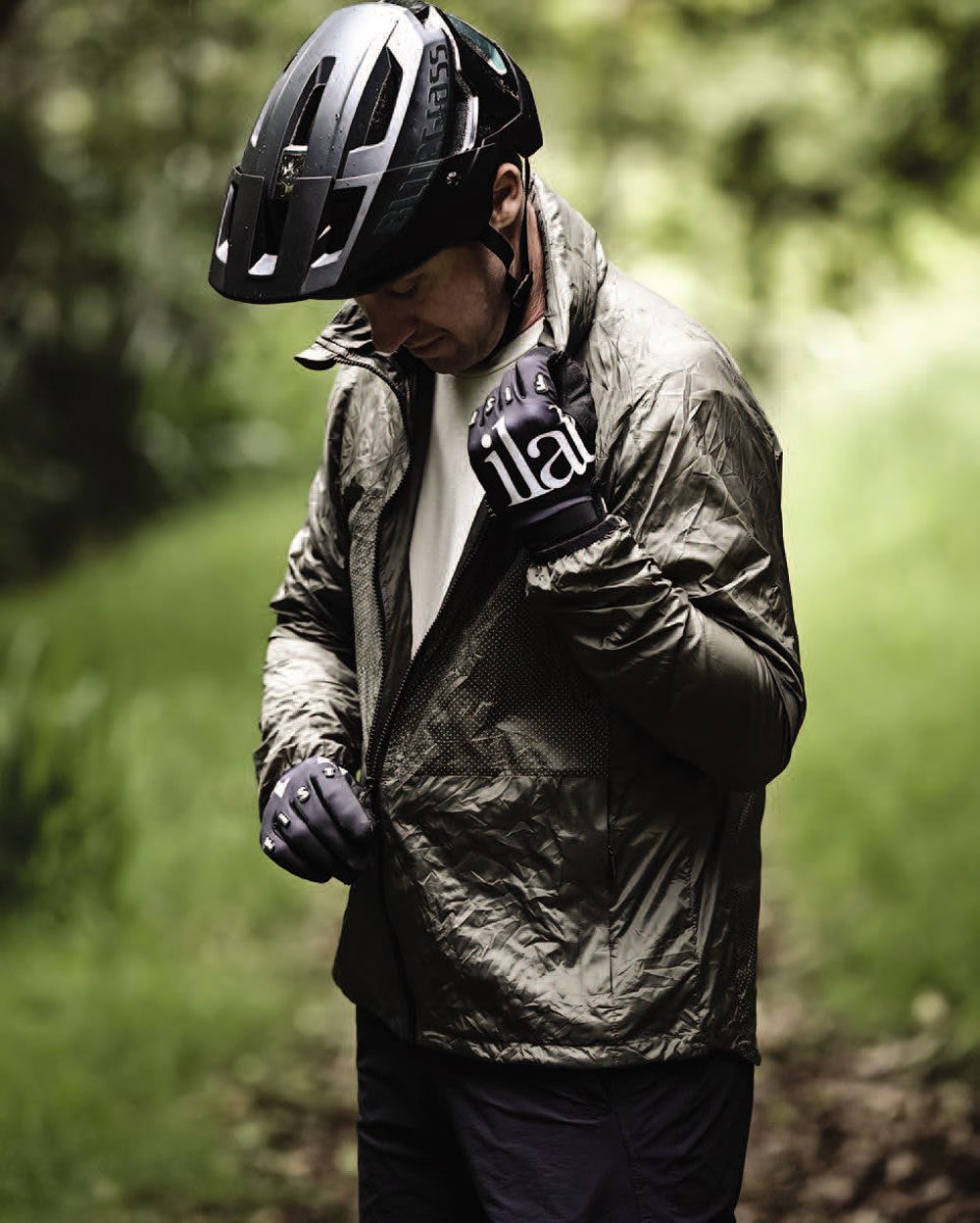
Fist Gloves $59.99
It takes all of about two seconds to know whether a set of gloves work for you. ilabb’s Fist gloves work for me. Not too thick, not too thin, just right (again!). Personally, I don’t need massive amounts of protection, I just want to be able to hold onto the handlebars and not have my sweaty hands slide off the ends. The ilabb’s fit my hands just right, they don’t rub anywhere, they’ve got all the right stretch in all the right places, and they haven’t got holes in them after the first handful of rides (unlike some other gloves that shall remain nameless). I also liked the slightly thicker neoprene cuff. After a decent amount of riding with them, they still look great and aren’t showing any significant visible signs of wear. The full logo across the whole back of the hand probably isn’t my personal flavour, but it doesn’t really bother me because they fit so damn good!
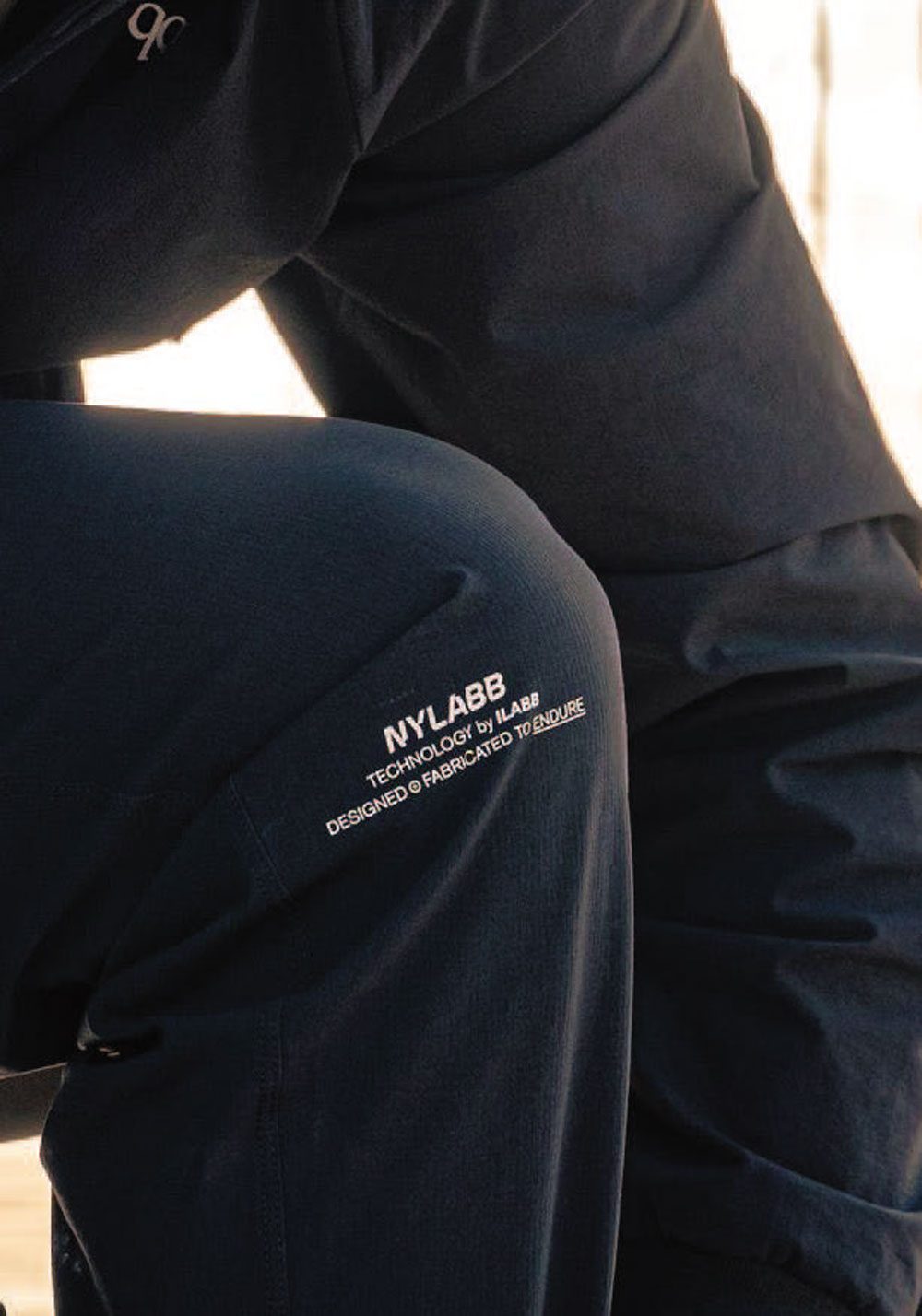
Commuter Pant $159.99
Lots of us use our bikes for getting to and from work, and ilabb’s range extends well into catering for this as well. The Commuter Pant is made of the same NYLABB material as the Terrain shorts, and has a healthy ability to repel water, even though it’s not designed to be a waterproof pant. It’s got a great cut and subtle finish, meaning you could definitely wander into your local brew pub on the way home and not look out of place. In fact, depending on your dress code at work, you could just about get away with wearing them in the office, too. A subtle reflective logo on the knee might help cars see you if you forgot to charge your lights. These pants are lightweight, breathe well and feel great on. Two zippered pockets on the front, and two on the back, mean there are plenty of options to stow stuff.
Commuter Bomber Jacket $199.99
What is it about Bomber jackets? You just feel cool wearing them, right? ilabb’s bomber jacket is no different. An ideal piece of kit, it crosses seamlessly from bike to pub to local MTB club committee meeting - and any other social environment where casual bike wear is not only accepted, but endorsed. A traditional Bomber collar, domes down the front, and wide cuffs complete the look, while the NYLABB material has a stealthy matte finish that also repels water. The Commuter Bomber Jacket is lined, to provide additional comfort and warmth. Done up, it doesn’t flap around, is cut to fit the riding position, and has a good amount of stretch, so it feels great. There are vents under the arms to keep you as cool as you look.
Nevis Vest $179.99
Vests are underrated. Why don’t we wear more vests? They are great for keeping your core warm, they let the heat out when you get hot, and allow your arms to work freely. Vests are great, and the Nevis vest is a near-perfect example of this. The Nevis is made of a softshell material (ilabb’s TEAMTECH, a softshell outer fabric with a bonded fleece inner and water-resistant coating) that keeps the wind from ripping through you on colder days. I’ve found myself wearing this a lot, as our Taranaki weather typically has four seasons in one day; early morning rides, dropping the kids to school, nipping down to the shops - the Nevis vest seems to fit just about every occasion. Two zippered front pockets and a waterproof chest pocket means you’ve got places to put your stuff - and the full length and decent sturdy front zip means you can unzip it all the way down and let it flap in the breeze if that’s your jam. Silicone strips round the bottom mean it won’t ride up while you’re riding home.
Review: Lance Pilbrow
Distributor: ilabb
Review: Smith Wildcat Review
“The clarity from these is top-notch and I found it great for use in areas of medium to bright exposure.”
Glasses are a critical piece of cycling kit for me. Am I the only one whose eyes water as soon as I’m rolling faster than about 5km/hour? Because of that, I basically never ride without glasses – which suits me fine as, on the odd occasion I don’t have them, I seem to get something flicked into my eyes anyway. So yeah, glasses are my friend. As a result, I was stoked to be able to try out a set of new Smith Wildcats.
The Wildcats are one of Smith’s latest offerings and feature a massive wrap-around lens. Smith has a reputation for high-quality eyewear and lots of experience making goggles, and the Wildcats almost come across as a strapless, frameless (almost) pair of goggles. The pair I tested were the matte black frame with the ChromaPop black lens. There is a clear lens in the box, as well. The black lens features Smith’s ChromaPop color enhancement technology and is finished with a light black mirror. The clarity from these is top-notch and I found it great for use in areas of medium to bright exposure. They’re probably a bit dark for a dense forest on an overcast day but, generally, I found them just right for daytime riding. I even took them skiing for a day and they did the job just fine there too. The frame is a hybrid TR90 and TPU frame, it’s got a lightweight feel but still feels solid. The hinges have a satisfying notch as they lock into place. Changing the lens is dead easy – just flex the upper frame up and the lens easily flexes open and wiggles past the side mounts. It’s worth noting, a red mirror lens is also available.
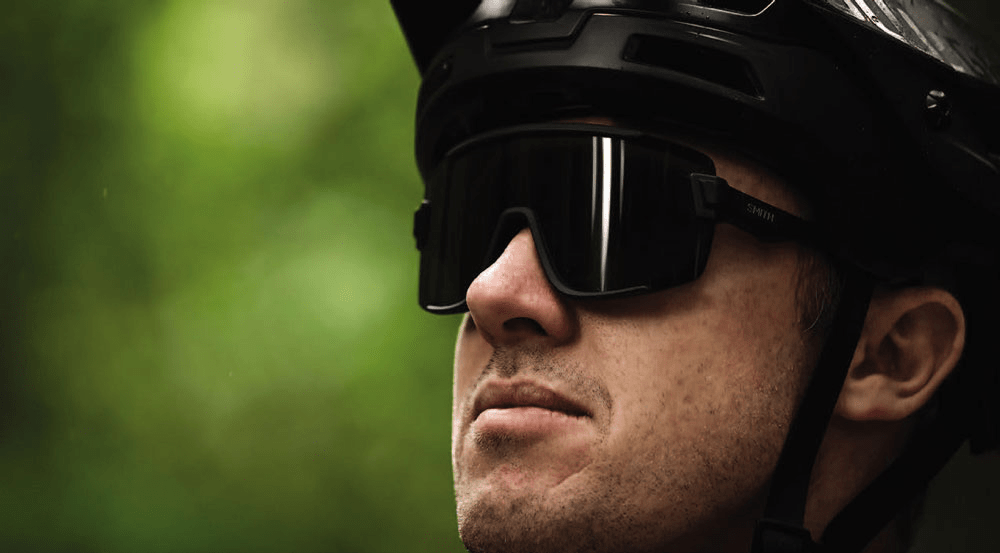
Fit wise, I find the Wildcats to be supremely comfortable. The nose piece has two positions – narrow- wide adjustment – as well as the ability to slide vertically a fraction as well. Both narrow-wide positions fit me fine; the tighter position just sits the glasses out a little further, and with the wider position, they sit a little closer to my face. I’m actually still not sure which one I prefer. Both the nose piece and the arms feature Smith’s hydrophilic megol rubber, which is grippy and comfortable. I found they stayed in place on-trail perfectly. I loaned them to a friend who found them to slip a bit, but I may have stretched the frame out a little by that point. Whether he’s small headed, or I’m big headed, I’m not sure – I didn’t ask my friend for his opinion. I happen to ride a Smith Forefront helmet and, no surprise, the glasses integrate really well with that helmet. I also tried them with a Bluegrass Rogue, and they fit fine too. The arms are quite long but they don’t seem to get in the way of my helmet, which is great.
At 135mm wide and 62mm tall, these are some of the biggest glasses out there. I’d say I have a normal sized head and don’t generally wear massive glasses, but I liked the fit and look of these. This larger size meant, for me, they offered great protection from debris and also kept the wind flow (that makes my eyes water) well out of the way. Despite being so big, they only weigh 32grams – so don’t let the big size put you off. Glasses this large tend to have a bit of a ‘look at me!’ vibe about them, but I found that the matte black kept them a bit more understated, which I personally prefer. You can always add the fire-red lens if you want to stand out in the crowd. The Wildcat’s come supplied with a sturdy, hard case so they are well protected when you’re not wearing them as well. All in all, a great set of glasses that ticks all the boxes – recommended!
Review: Lance Pilbrow
Distributor: FE Sports
RRP: $315
Feature: Emma Bateup Into the Wild
Emma Bateup is always up for an adventure. In fact, if she’s not out on her bike completing a challenge she’s set for herself, she’s plotting and planning her next endeavour. Whether it’s Burbing, Everesting, or completing the Olympus Mons challenge, Emma never shies away from intrepid, unique adventures that take in the best this country has to offer.
Emma first got behind the handlebars at age three, beating her younger brother to the punch – he didn’t start riding until he was six. Despite that, Emma says her brother is one of the main reasons she is so into mountain biking now. Having parents who regularly took them into the great outdoors, meant both siblings progressed at riding from a young age. But, in her early high school years, Emma switched and started road racing. At the same time, her brother was getting into mountain biking in a big way and soon started dragging Emma out with him.
“On some of my first rides with him, aside from just family rides, he would just take me down a Grade 5 downhill track – so I think I just walked a lot of it! But it meant I was exposed to some pretty gnarly stuff, right from the start,” explains Emma.
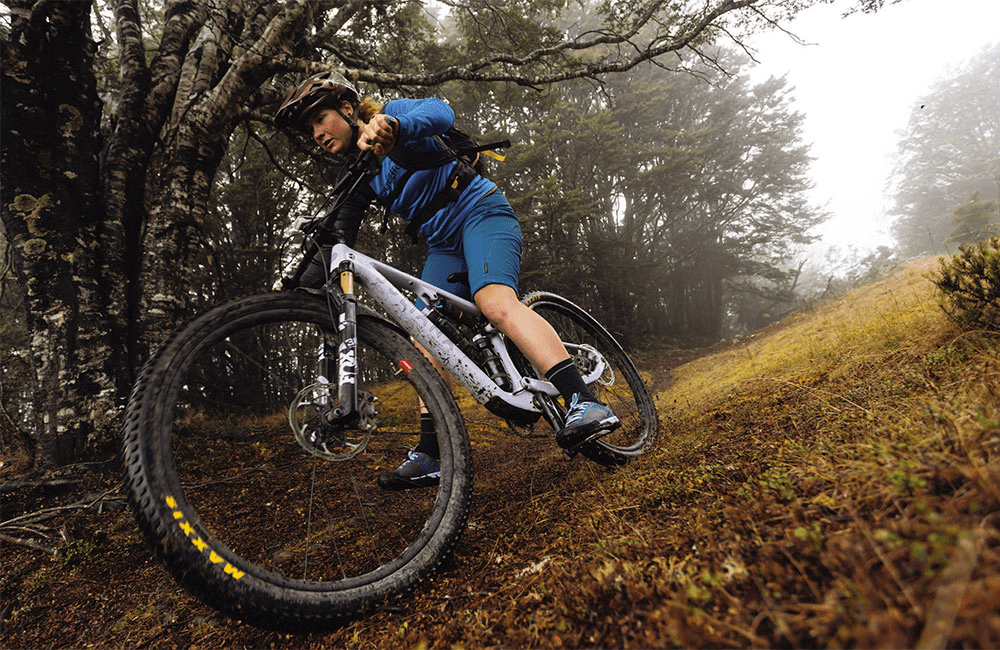
That baptism by fire happened when she was just 16 and, over the past six years, Emma has channelled her competitive energy into a variety of different racing styles, with a focus on Enduro for a time.
“Now I just do a heap of random stuff!” Emma laughs. But she’s not joking – take one look at her Instagram account and you’ll see what she means: there’s bikepacking, solo missions, racing, multisport training and even some pre-pandemic overseas bike trips to make you feel extra envious of this intrepid adventurer.
In this industry, it can sometimes feel like the only people venturing out into the wild – particularly on their own – are men, so it’s somewhat refreshing to know that Emma is doing just that.
“I think sometimes women are just a bit more planned,” she explains. “There’s still women out doing really gnarly stuff and massive adventures, but I would say they tend to pre-plan it a lot better. Although, I definitely don’t! With the Olympus Mons, I decided I was going to do it on the Sunday evening, and I started it on the Wednesday. I was always planning on doing it at some stage but deciding to do it that week, when the weather was good, was a pretty last-minute decision.” Emma agrees that perhaps us women don’t shout about our achievements quite so loudly as our male counterparts, either. “I often find it hard when people ask me what I’ve been up to. I always just say ‘yeah, I’ve been riding my bike’ – it’s kind of hard to explain that I’ve just ridden the height of a mountain on Mars....”
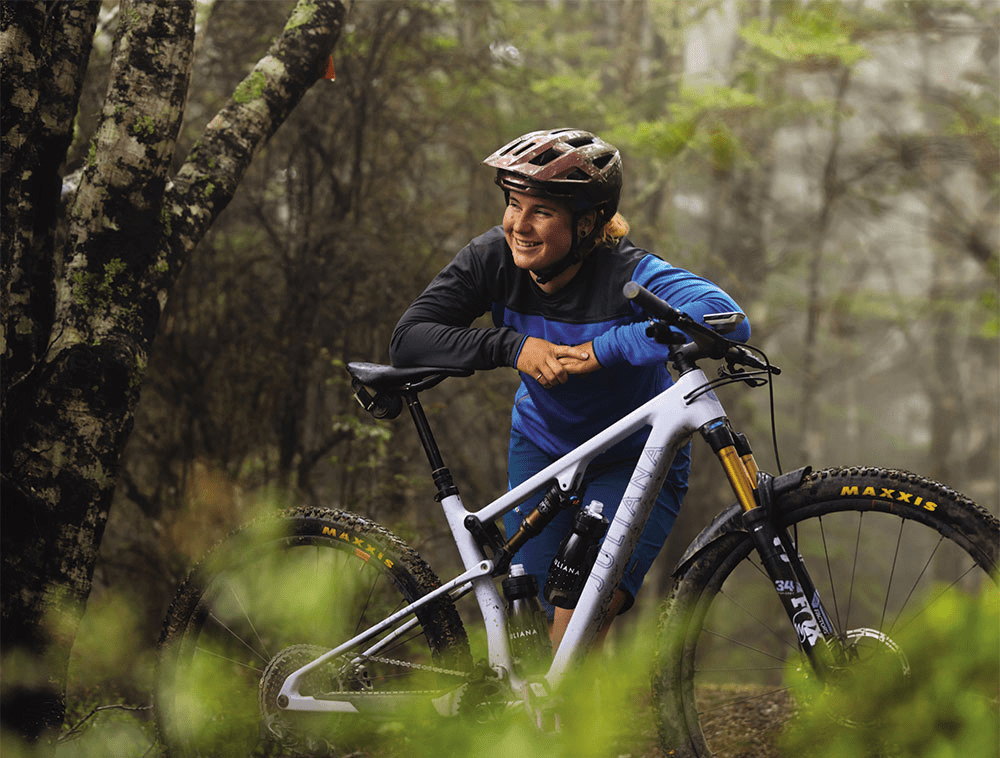
Thankfully Emma doesn’t have to explain herself too much to her parents or old friends anymore – they are starting to understand her constant quest for adventure and are no longer surprised when she tells them she is off on her next ride, even if the route is somewhat obscure. “It’s been interesting this year because I’ve got a whole new friend group, from studying, and their reactions have been great!” Emma laughs. “They’re not overly outdoorsy, so what I do is even more foreign to them. Sometimes I just stay quiet because it’s almost harder to explain it.”
Emma says that although her adventures are hard for some to comprehend, to her they feel like ‘just another weekend’. When things start to feel too ‘normal’, Emma kicks it up a gear and starts planning something bigger or longer or more challenging – she’s constantly plotting and planning where the next adventure might take her. “There are some things I have been thinking about for a year or so, but then some things I might think of the week before and go ‘ok, cool, I’ll go and do that!’ I’m quite an impulsive person, so that keeps me excited,” explains Emma. “I like pushing the limits, I don’t like going and doing the same – or similar – thing twice. If I’ve done a 300km ride then I want to do a 400km ride and so on, until it gets out of hand and then I’m going into nights....”
Lack of sleep, and riding through the night, is not something Emma shies away from despite the fact she is almost always tackling these challenging rides on her own. During the Olympus Mons challenge she completed in November, Emma only slept for 10 of the 72 hours it took her to finish the ride. The fact she even completed the challenge puts her in a pretty unique position – only one other person has completed it in its entirety. The Olympus Mons was something Emma had been thinking about since March this year, waiting for the perfect weather and finding the ideal loop to ride. Completing the challenge completely off tar seal also makes Emma a unique participant in the Olympus Mons, as the only other person to do it completed it mostly off tar seal but with a few sections of tar seal as well. She even incorporated a little bit of singletrack into each day – you know, just in case the challenge wasn’t already tough enough!
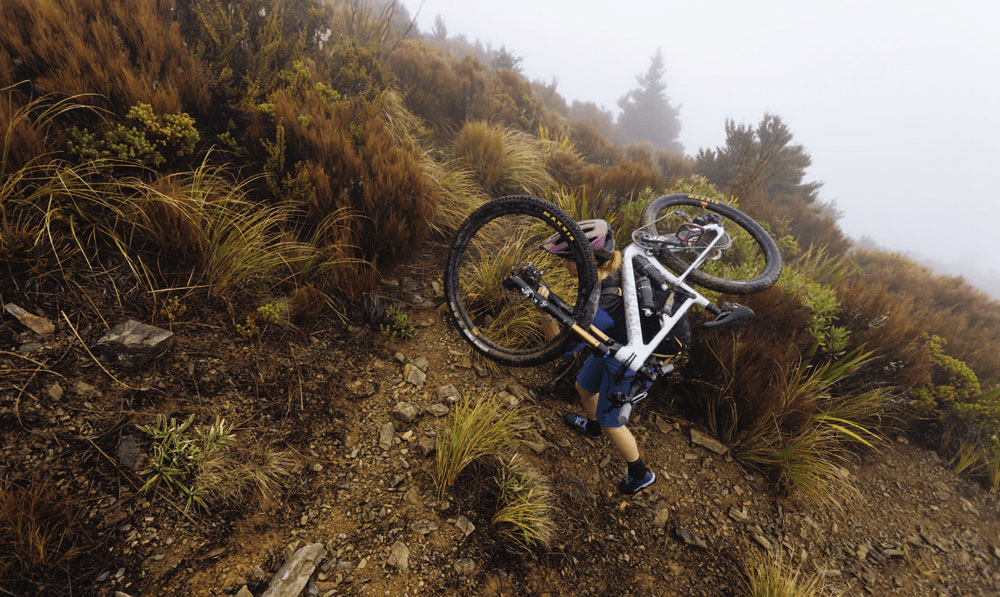
Although Emma undertakes these challenges on her own, her friends are always only a phone call away and offer their support by charging lights, delivering food and even giving her bike a tune up after hours of riding. “Some of my friends even came and rode a few laps with me [on the Olympus Mons and Everest challenges] .... but no one wanted to come out and ride on the last day!” laughs Emma.
This summer, Emma will take on the ultimate self-supported challenge when she rides the Tour Te Waipounamu – a ‘warm up’ for GodZone, which she’ll be competing in a month or so later. “In a way it’s something that is really familiar to me, because I do a lot of riding, but I’ve never done anything quite like Tour Te Waipounamu before, so I feel really inexperienced,” says Emma. “It’ll be interesting. It’s a lot of sleep deprivation so....”
In terms of planning for 2022, Emma is focusing on Tour Te Waipounamu and GodZone, particularly over summer, but she’ll be looking for other adventures to tackle once she’s completed both of them. “There will be other races that pop up and while I’m doing adventures I’ll think of other things – like ways of linking up a whole heap of trails – and so I’ll do that over a week,” explains Emma. “I never used to have this need to constantly do things, but now I just like seeing how far I can push myself.”
Emma says it’s been interesting to see the progression and keep building on it. “With the long-distance side of things, it’s easy to get burnt out, but it’s not like you really peak,” explains Emma. “It’s just constantly building up. I might have a slow period but then I’ll build up again. I don’t have much fast speed anymore, which is a bit sad, but I can just keep going. Physically, I’ve got a lot of capabilities, but mentally – with the sleep – that’s the hardest thing. I know my body can do it, but I’ll be beating myself up thinking I’ve got another two days to go! It’s a work in progress.”
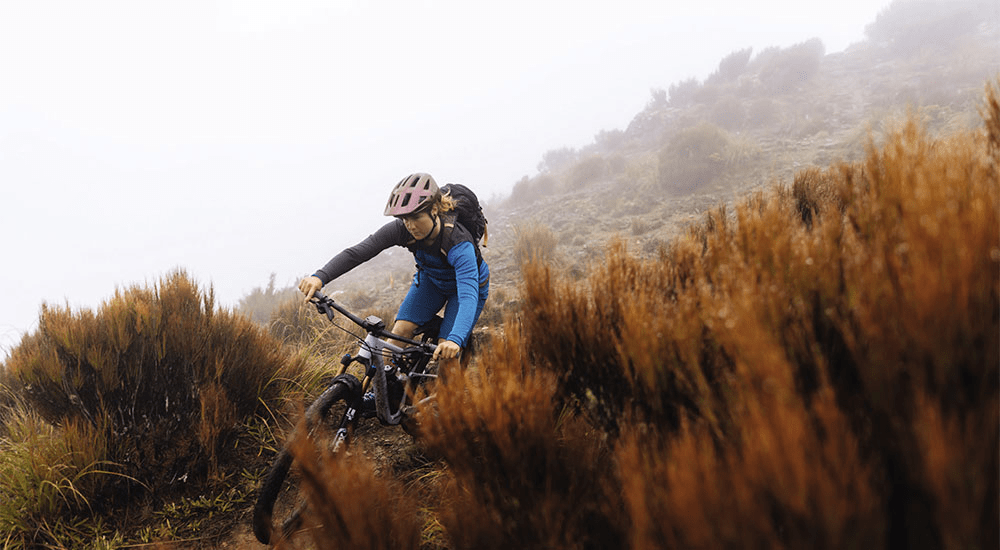
As well as her own self-imposed challenges, Emma has completed some of the better-known ones as well. Everesting, a Mount Cook challenge, Burbing and, of course, the aforementioned Olympus Mons. For the uninitiated, Everesting involves riding a hill – any hill the rider chooses – over and over again, in a single activity, until you’ve completed a distance equivalent to the height of Mt Everest. The Mount Cook and Olympus Mons challenges are the same concept, except riders complete the height of Mount Cook and Olympus Mons, which is the highest mountain on Mars. Yes, Mars – as in, the red planet.
These sorts of challenges – self-imposed or otherwise – require a certain level of resolve, and Emma will be the first to admit she has a ‘just keep going’ attitude, on or off the bike. “I don’t like quitting things,” says Emma. “With riding, this year, I’ve pulled out of one thing and that was because the weather got really bad and I was on a main road, and I probably would have been hit by a car. That was hard to do. I guess I do have a mentality of, when I’m in something, I’m fully there. I really beat myself up if I don’t finish something. I know if I don’t do it, I’ll regret it – and that keeps me going.”
Being ‘fully there’ sometimes means choosing between her beloved bike adventures and studying. Emma is a first-year nursing student and, while she loves studying, she admits she sometimes just wants to be outside, on her bike. “Riding has been my way of switching off and resetting my mind,” explains Emma. “I struggle to just not do anything – even sitting at home watching a movie, I get so bored! I definitely like to be busy but, that does make me tired. A rest for me is going to work. I work weekends in a bike shop, I just get to talk about bikes all day – which is awesome!”
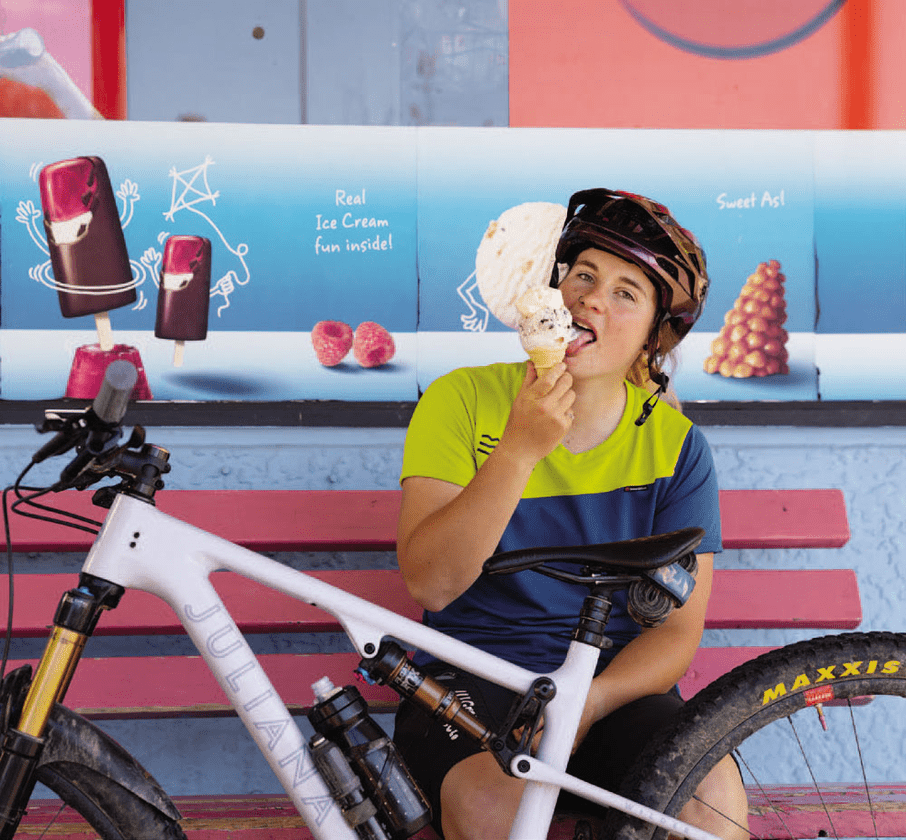
Emma is full of encouragement for others who might want to take a step into the unknown and eventually try out a solo adventure or challenge for themselves. “To start with, find other people who are in the same boat – if you’re scared then it’s likely someone else will be too, so you can conquer something together. When I first started riding, me and another girl from school would go out together and try out these Grade 5 trails – and mostly walk down them. But it didn’t seem as hard because we would both be struggling and we’d both spend all weekend crashing! If you’ve both just crashed on the same corner, you can generally just have a good laugh about it, which makes it okay.”
And what about the times everything is not okay? Bearing in mind Emma is often out exploring on her own in remote places. “It makes me sound like a bit of a wimp.... But I’ll generally cry!” laughs Emma. “If I’m having a bit of a shit time – sometimes I’ll stop, sometimes I’ll just keep going – I’ll have a good cry and let it all out, then I’ll get going again. I’ll have a quick breakdown, then I’ll go, ‘harden up!’ and carry on. I didn’t cry during the Olympus Mons, though, so I was really proud of myself for that!” It’s hard to imagine Emma crying – she sounds like someone who permanently has a smile on her face! But, knowing she’s not immune to tears makes her even more of an inspiration.
So, how can we all be a bit more like Emma? How should we go about setting challenges for ourselves, packing up last minute and heading into the wild? “Throw yourself in the deep end,” Emma suggests. “It is scary at times, but you’ll always be stoked you did it.”
Words: Kerrie Morgan
Photography: Henry Jaine
Review: Giro The Latch shoe
“The ‘fast-drying Microfiber upper’ really does what it says on the box...”
Contact points: where you connect with your bike, and your bike with the trail. Contact points really are the most important points to consider when you’re looking at making improvements to your riding and set up. Well, they are the most important to me, anyway.
Giro has released their new flat pedal mountain biking shoe, The Latch, with a casual yet stylish look, in a range of low-key, subtle colors. And these shoes are surely going to be a hit, based on looks alone.
The build of The Latch is sleek and tidy, and you get the feeling it has been constructed to withstand the beating of back-to-back laps and day-long missions in the mountains. With an easy-to-clean exterior, there are no awkward creases or joins to try and dig dirt out of; all that is needed is a quick wipe down, post-ride. I rode these shoes in all conditions to try and give the best review I could, and one thing that did really impress me, was just how fast they dry out after being completely soaked. I am really not a fan of putting my dry feet and socks into wet shoes in the morning. When I checked on these shoes the next day, after a soaking wet ride, they were just about dry and all I did was kick them off into the laundry room! The ‘fast-drying Microfiber upper’ really does what it says on the box....
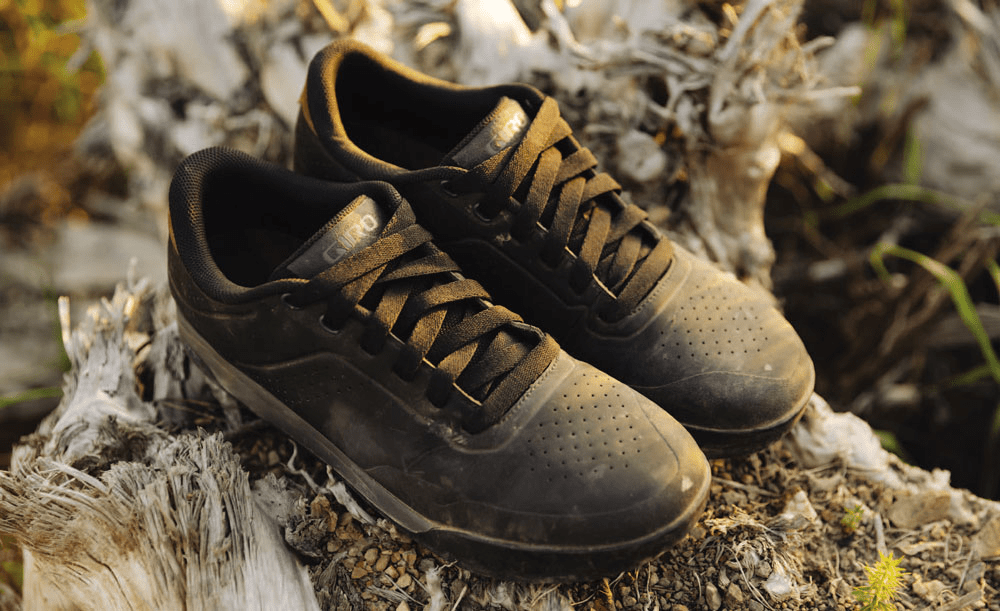
Alrighty, moving onto the fit: I have pretty wide feet, and have always struggled with finding shoes that accommodate these flippers of mine. When I first slipped these bad boys on, I was pleased as they were very comfortable and cushioning. Unfortunately for me, after about half an hour, my feet felt hot and uncomfortable from being ‘ever-so- slightly’ squeezed. To remedy this, I loosened the shoes right off, which did help, but I was still experiencing that feeling of tightness. Like I said, I do have quite a wide foot (at the widest point it’s 11cm). So, if your feet are similar to mine, you may experience this same feeling.
Now for the ride feel: ‘Tack’ is such an appropriate name for the new rubber sole from Giro, as it gives a great connection between you and the bike.
I first rode the Giro Latch with a pedal I usually run, but its pins are not quite as sharp as those on my other set. My experience with this set up was frustrating at first, as I felt that the new Gamma tread pattern was not quite deep enough. An example from one of my test runs, was when I was pushing it through rooty sections of trail and – even with the Mute foam mid sole – I was finding I had to adjust the centre of my weight forward to feel more secure on the pedal, which was then changing the way I rode my bike. It didn’t feel bad, however, it was just different.
Giro mentions on their website that The Latch have a ‘new fit that brings the foot closer to the pedal and flattens the sole profile’. Perhaps what I had experienced was a result of this.
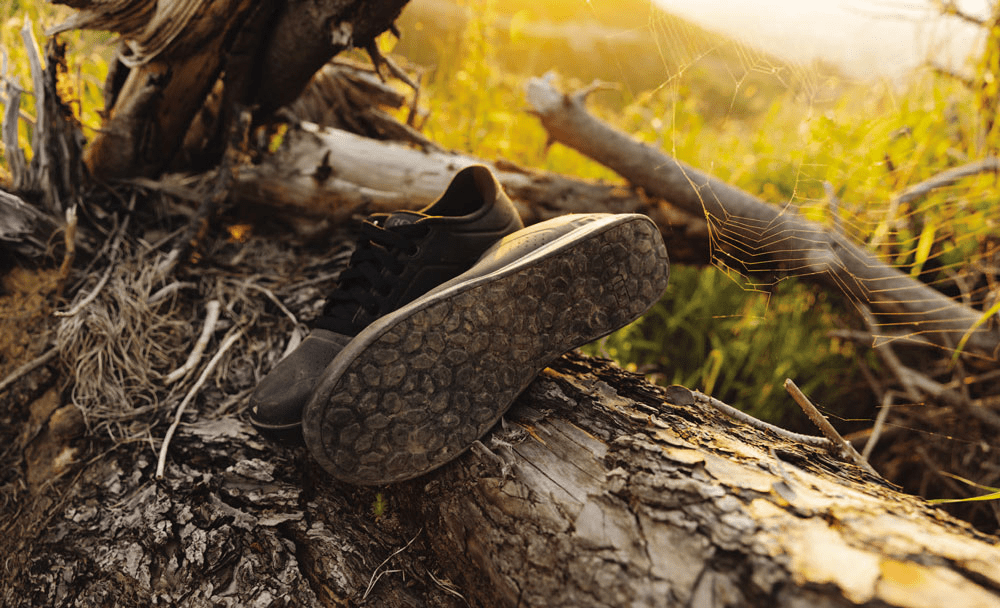
But what if you don’t want your foot ‘closer to the pedal’? Enter pedal number two.
With the pairing of sharper pins and the Tack rubber sole, I found I was able to maintain the position I am most comfortable in – and with full confidence too! The pins were all I needed to really get a good feel of The Latch. I could push in, turn and pop out without feeling like I had to scoop with my feet to bring the bike with me. The connection between the shoe and the bike is super confidence inspiring; I felt I could really put the bike wherever I wanted and it wasn’t going to disappear from underneath me.
The comforting, quick-drying upper of the shoe paired with the cushioning mid-sole and the tacky rubber sole, is all wrapped up in a tidy and subtle aesthetic. The new Giro Latch flat MTB shoe is definitely worth considering if you need to replace your worn-out riding shoes, or if you are looking to make an improvement in your riding. Consider you connection; are you ‘Latched’ on?
REVIEW: SAM TODD
DIST RIBUTOR: WORRALLS
RRP: $269
Feature: Hanmer Springs - The Gold in them there Hills
Hanmer has the beauty and charm of an Idyllic Mountain Town - perhaps a little like what Queenstown may have felt like 50 years ago.
This has been a tough year for many, arguably those living in the Auckland region – and those stranded overseas trying to get home via the MIQ lottery – most of all. In the era of COVID-19 and lockdowns, exactly where you live has a dramatic effect on every part of your life. Those in Auckland have endured 100+ days of lockdown now, while those in the south have enjoyed relative freedom. Regardless, lots of us are looking forward to a summer break where we can truly recuperate. But where should you go to do that?
After spending a few days there recently, I would argue that Hanmer Springs, 130 km north-west of Christchurch and 65 km south-west of Kaikoura, might be worthy of serious consideration. In fact, recuperation is pretty much in Hanmer’s DNA.
The hot springs for which Hanmer is famous for, have long been used for the purposes of rest and restoration.

Leaving Hanmer, the trail up is tight singletrack, cut into the slope and, being in the mountains, you are climbing on a rocky shale surface the whole way. This surface means that trails stay in great condition for most of the year.
Since the early 1900’s, facilities were built around the hot pools and, over the years, these have variously been hospitals caring for sick and wounded soldiers, facilities for caring for women, as well as caring for those with alcohol or drug disorders. The theme has been the same throughout; hot pools, fresh air and sunlight, away from the hustle and bustle of larger centres, Hanmer was a place where you could come to rest and be restored. What’s more, the population is only 1120! Hey Auckland! Sound appealing yet?
Of course, rest and relaxation isn’t just about sitting round the pool – it’s about getting out and hitting some trails. When you drive into Hanmer, the first thing you notice is the lines of trees down the main street. It’s got the beauty and charm of an idyllic mountain town – perhaps a little like what Queenstown may have felt like 50 years ago. From town, you can look up and see Conical Hill and, as you look around, you see the broader outlines of the Hanmer range and Mount Isobel (1324m). It’s this combination of a small mountain town, with trails on your doorstep that makes Hanmer Springs so appealing.
We stayed at the iconic Hanmer Hotel, built in a Spanish Mission style and completed in 1932. It’s the perfect place to base yourself during a stay in Hanmer, and is an architectural icon in its own right, as well as being surrounded by beautiful grounds – perfect should some in your party want to leave you to ride while they enjoy the grounds, the pool, or a drink in the courtyard.
Once we were settled in, it was time to hit the trails. We were fortunate to have a guided tour of local trails by none other than Hanmer Springs’ local mountain biking ambassador, Anton Cooper. Anton is pretty much a household name now but, if you’re unfamiliar, he’s a New Zealand Olympic Team rider, regular on the World Cup XC circuit, and ended up with a stellar 8th overall at the end of the 2021 season. If that wasn’t enough, we were also joined by local legend Steve Halligan. Steve may be less of a household name if you haven’t delved into the ultra-endurance bikepacking scene yet, but Steve is one of these guys who will ride for 24hrs straight, sleep for an hour or two then crank out another 300km. To give you an example; despite mechanical setbacks, in 2019, he rode to 4th in the 4,418km Tour Divide (Banff to Mexico border) in 16 days and three hours! He’s a freak. But he’s also a hell of a nice guy. Between Anton and Steve, I was already feeling like this might be a weekend I wished I was on an e-bike to help level the playing field.
Once we had all checked in, there was still time for an afternoon ride. Heading out from our hotel, we were onto some gravel within five minutes and started ascending up the Clarence Valley Road; a good warm up and the fastest way to get to Tank Track, that gave us a decent reprieve from the climbing and conveniently led us on to Yankee Zephyr, and our real trail target, Tombstone.
Together, these form a great loop that is a real workout and gives intermediate to advanced riders some solid climbing. Leaving town, you are at about 340m above sea level, and at the high point on Tombstone you will have reached 680m. The trail up is tight singletrack, cut into the slope and, being in the mountains, you are climbing on a rocky shale surface the whole way. This surface means the trails stay in great condition for most of the year.
At the top of this I had a healthy sweat on and had felt like I’d done some decent work, but I’m pretty sure neither Anton or Steve’s heart rate got above 60.



From the top of Tombstone, it’s a tight and twisty downhill – hand-built single track at its finest, and you have to be on your game to make sure your handlebars don’t clip any trees and your wheels don’t veer off the edge. Within moments of dropping in off the Tombstone summit, and despite my best attempts to stay with him, Anton was gone – completely out of sight – and this was a pattern that would be repeated, over and over and over the next few days, making it abundantly clear why he is a professional rider and I.... am not.
The trails around Hanmer have an interesting way of quickly showing you exactly where your skill level is actually at and how confident you really are. There aren’t really jumps or drops that feature, instead what separates the pros from the noobs (as my Minecraft-gaming sons would refer to me as) were the long, tight, twisty downhills, shards of rock pointing out at the most awkward angles and the plenty of switchbacks that test your ability to judge entry speed, braking and overall technique.
As much as I was observing the trails and loving the terrain, I was also in awe of Anton’s ability to simply get round these tight corners that often felt like they had a loose covering of pea-metal sized rock sitting on the surface. He could truly hold uncanny speed through these, and time after time it was a case of one corner, two corners, out of sight. After Tombstone, we linked a few extra, fun flowing trails; Big Foot, Detox, and Red Rock to get back to town. Detox was a crowd favorite – a little wider than we had been riding with plenty of speed and flow to keep the smiles pinned.
On our second day, it was time for an expedition of sorts. Anton and Steve had been talking about a trail called Addiction – saying that it was one of their favorite trails of all time, and definitely worth the effort. Effort? If it’s an effort to these guys, would I even survive?
Addiction is a double black trail that’s a challenge not just to ride, but even to get to. One of the interesting things about Hanmer Springs is the 4WD roads that surround it. Jollies Pass Rd, and the Clarence Valley Road, are joined by Top House Road to form a bit of a classic backcountry 4WD loop that can be a fun addition to a trip. You could also use these to connect the St James cycle way back and ride all the way back into Hanmer.
We didn’t have time for that on this trip, but I would definitely like to do that another day. For today, it was riding from our hotel, up Jollies Pass Road till we got to around 850m elevation – that’s about 500m vertical with no reprieve and, as much as we loved the perfect blue sky weather we had for this trip, I would definitely recommend getting started earlier than we did because it was hot, hot, hot, grinding up Jollies Pass Rd with the sun beating down on us.
Eventually, we reached the turn off to Addiction and, after a gentle traverse, the trail seemed to literally tip downward. This is the point where you are either glad you’ve got a new set of brake pads in, or will be kicking yourself for not having them, because the next few kilometres are steep technical descending with no let up. With plenty of elevation to play with, the trail builders clearly saw no reason to eek it out, instead they decided a direct approach was the best way to get down. The start of the downhill is a solid 500m where the average gradient is consistently 35-40% down before you get a let up. Where you are used to trails having a natural ebb and flow of tech, steep, and then periodically flatter sections, Addiction just keeps on giving. There are one or two sections where the trail just stretches out almost beneath you, where it is just a straight line down – no corners, just narrow steep singletrack, with plenty of that awkward angled rock to rip a hole in your sidewall or elbow should you get off-line.
Anton, typically, was nowhere in sight. I imagined him back in the hot springs wondering what was keeping us all. OK, that’s not entirely true, Anton did stay with our group and we had a blast riding together but, despite my best efforts, I still had no chance of keeping anywhere near him. By the time we reached the bottom, I could see why this trail is called Addiction; the first hit is a rush, but I think every hit after that would be even more satisfying. Conveniently, Addiction leads straight on to Detox which extends the fun even further.
Stopping and taking a few photos along the way meant that, by the time we were down, we were all ready to hit the famous Hanmer Springs Thermal Pools. These are a major tourist drawcard for the region, and for good reason – they are pretty special. These aren’t your average council hot pools; they are more aquatic theme park than just hot pools. I lost count of how many pools there are – there are cascading pools, aqua therapy pools, sulphur pools, rock pools, private pools, as well as a big play pools for kids and two pretty fun waterslides that yes, for the sake of research, we spent quite a while testing. (FYI: current COVID-19 restrictions mean you need to book ahead of time, so make sure you phone ahead to avoid disappointment.)
Back to the riding, our final day was spent getting the photographic requirements we needed for the trip, so it was hitting a few spots we thought best described the feel of what it’s like to ride here. Everyone was keen for another lap up Tombstone and now that we were all getting in the flow, getting used to the trails and riding them for a second time just escalated the fun. While we chose some of the more techy trails, it’s not just all gnarly; there are plenty of family friendly tracks that are easily accessible, only a few minutes from town, that even the littlest of legs can access without having to load up all the bikes onto the car each time you want to ride.
It’s the easy proximity to the hills that make it so appealing and, if things keep going the way they are going, I am sure Hanmer will no doubt turn into a real destination mountain bike town. On this trip, we rode the Old Ghost Road the day before coming to Hanmer and it’s this relative nearness to lots of things that makes it worth adding in to your summer road trip plans.
Having never spent time in Hanmer Springs, I was blown away by what it had to offer. Trails are the new ‘gold rush’ when it comes to small South Island communities – and when it comes to Hanmer Springs, ‘there’s gold in them there hills’.
Words: Lance Pilbrow
Photography: Cameron Mackenzie
Review: Reserve Fillmore Tubeless Valves
“Great design, doesn’t clog, and makes seating a tubeless tyre with a floor pump a bloody breeze.”
Look, perhaps this isn’t the most exciting product on your bike... but hear me out! Valves have stood the test of time over generations of different bicycles – but they haven’t really been updated since way back in the 1920’s. Basically, there are two types of valves out there: Schrader and Presta. I won’t bore you with the details – and quite frankly I don’t have the space! – but the Presta valves are the most popular, basically stemming from the early days of road racing. It wasn’t until the mid-2010’s, when tubeless started to arrive on the scene, that a tubeless valve with removable cores came along. I hope I still have you, because I really want to tell you about the Fillmore and how it aims to change the game, creating a new type of valve from anything we’ve seen previously.
As rims and tyres get wider, the smaller diameter of Presta valves with valve cores have become the norm – but the sealant clogs, and he Presta valve makes it hard to get air through to seat the bead on a tubeless tyre. Sometimes, it’s near impossible – I’ve definitely had a few shouting episodes in the garage, trying to seat tubeless tyres. Fillmore tubeless valves aim to change that with ‘high flow and no cog’ – meaning my missus hopefully won’t have to come into the garage to find out what all the shouting is about...
The Fillmore tubeless valve works using a poppet valve. Most commonly used to control gas or vapor, a poppet valve consists of an aperture that is opened and closed by raising and lowering a disc-shaped seal onto the opening. In this case, the opening is at the valve’s base, inside the rim, so when it’s closed, no sealant can penetrate the valve stem. And, when it’s opened, the air volume is unencumbered by a core or other parts. The Fillmore accomplishes this by using a single steel plunger with an O-ring that’s pulled onto the valve base when the cap is tightened. It’s also pushed into place with air pressure. I know this seems simple, but it works well.
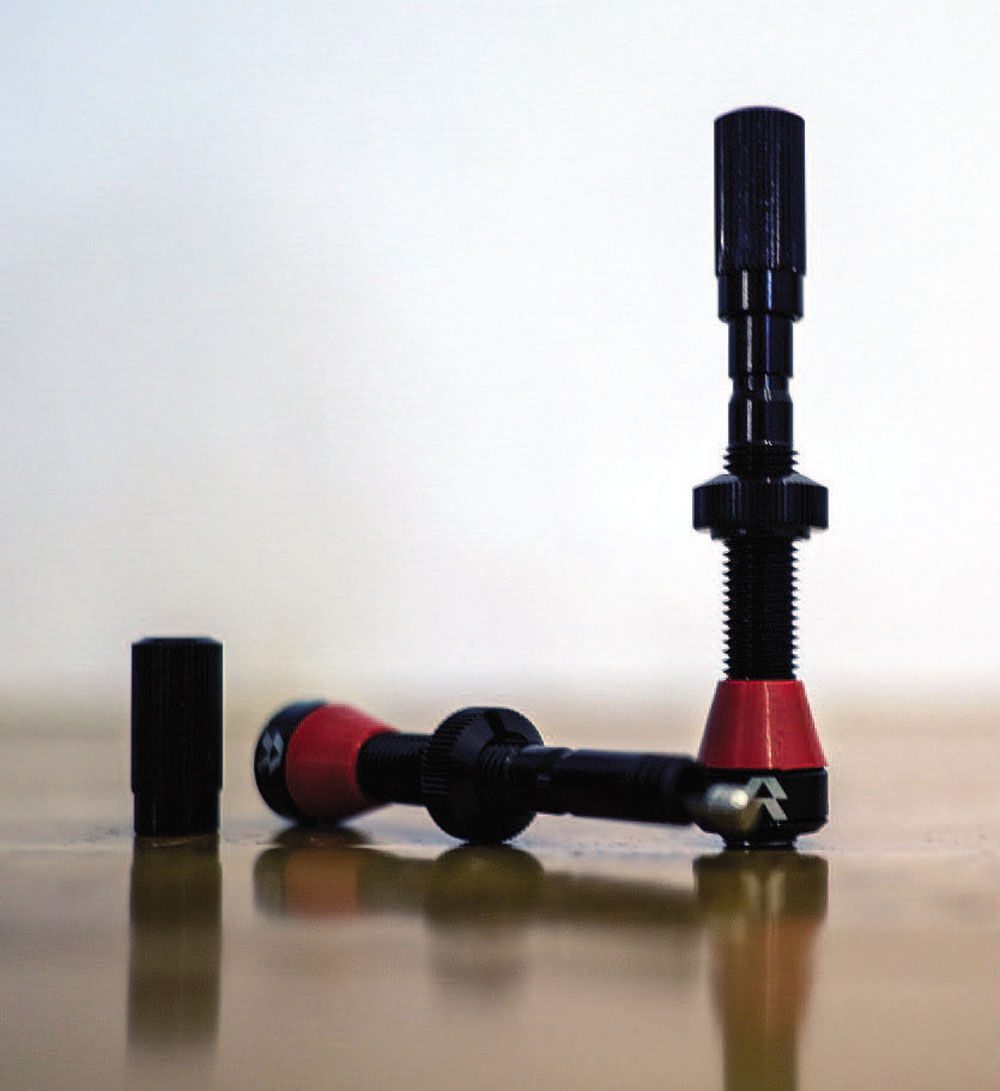
So, before I move on, let’s just state that these valves will cost you – a lot! But they’re a game changer and if they last forever then I’m happy to pay my hard-earned dollars. There’s a Lifetime Guarantee, too. The valves are made of intricate parts, so the cost is justified.
I laced these up to a set of Zipp Moto 3Zero Moto wheels. Normally, I’d remove the valve core and then charge up the air chamber in my tubeless pump to get the tyres to bead the rubber onto the rim. It needs a big blast of air to push past the small and clogged valve to bead up. The Fillmores were different, I pumped maybe four times quickly and the tyres caught a seat straight away. No shouting – so far – and flawlessly simple. There’s another addition to the design, which is the ability to precisely bleed air using the cap. This means that if you unscrew the cap a few turns, you can then simply tap or press it to let air out of the tyre in a controlled manner. This is a super handy feature and ensures you can get the right pressures based on the terrain you’re riding.
In the short time of testing, I’ve found no issues with these valves. I did think maybe losing the cap would cause air leakage, so took one off for a rough trail. But, no drama or air leakage occurred. After a month or so, I wanted to see if the sealant had clogged, so I deflated the tyre and looked. There was minimal residue – which is bloody impressive. I’m astounded that this hasn’t been thought of before, as this industry moves at great pace. The Fillmore valves are the answer to a question you may not have known you had but, once answered, makes your life so much easier. Plus, it helps you keep your angry shouting at bay. Great design, doesn’t clog, and makes seating a tubeless tyre with a floor pump a bloody breeze. Ok, so they’re on the pricier end of the scale, for valves, but after using them I doubt I’ll go back.
REVIEW: LIAM FRIARY
DISTRIBUTOR: HYP ERFORMANCE HARDWARE
RRP: $85


